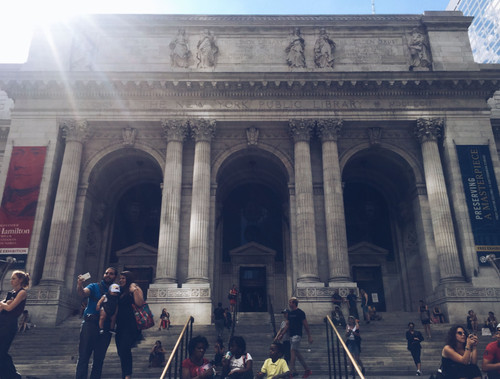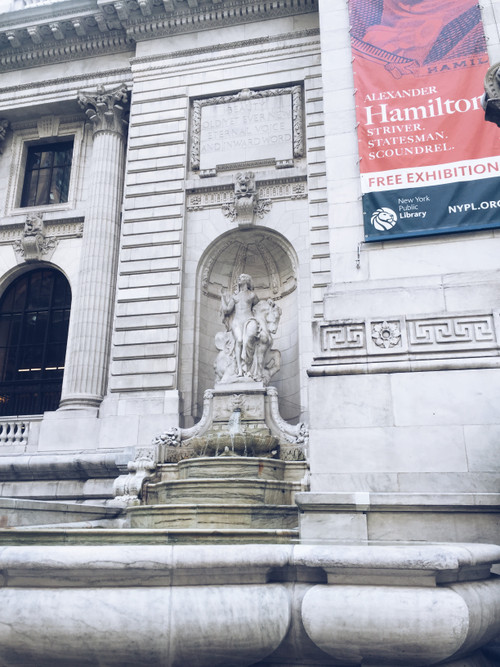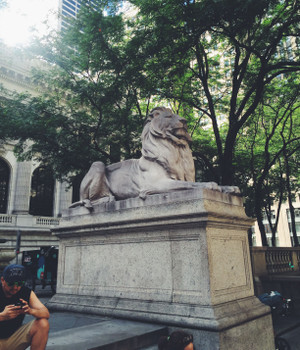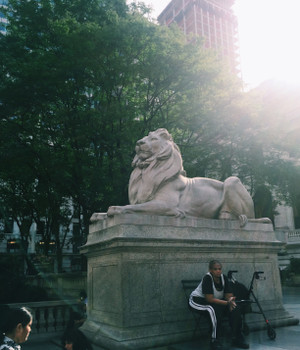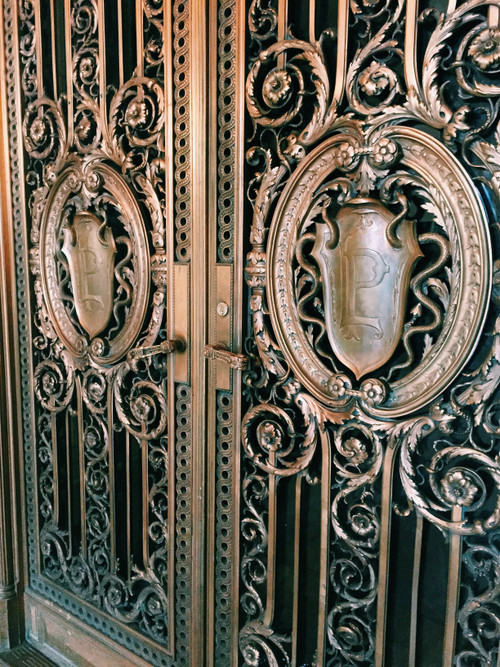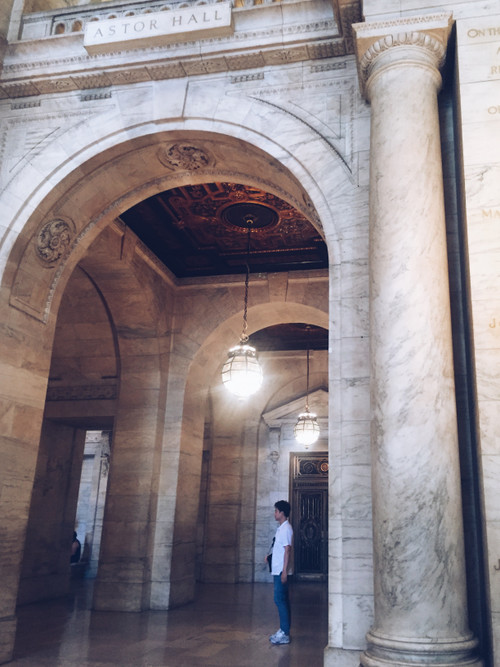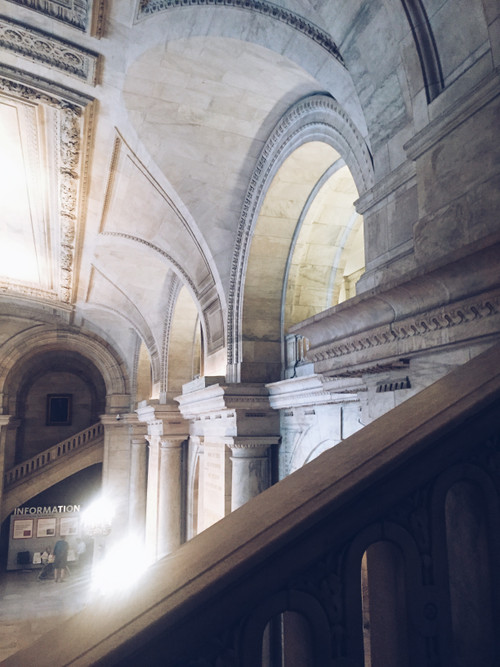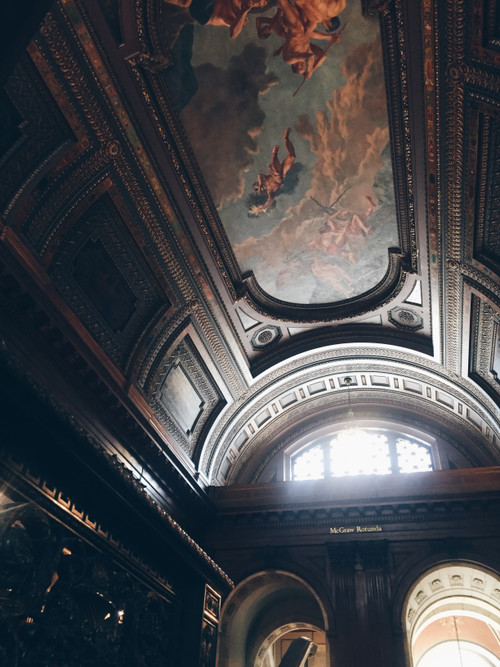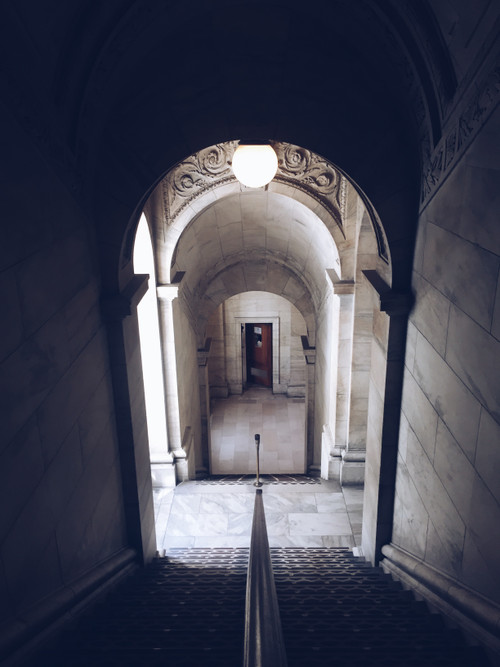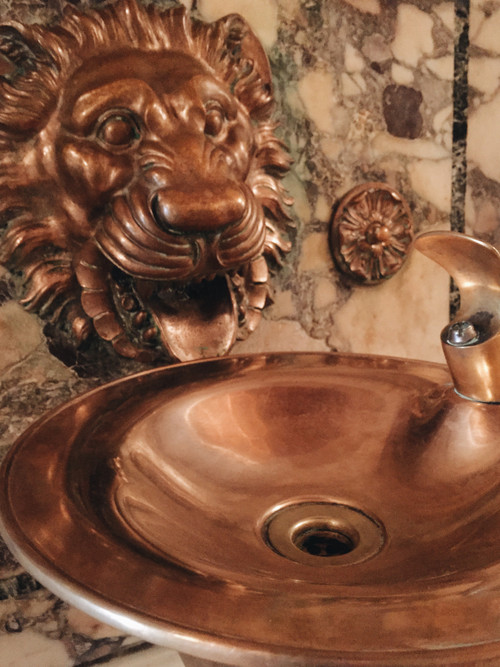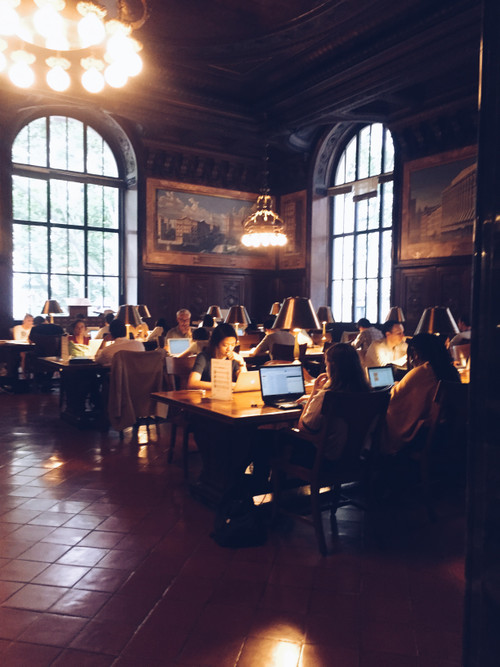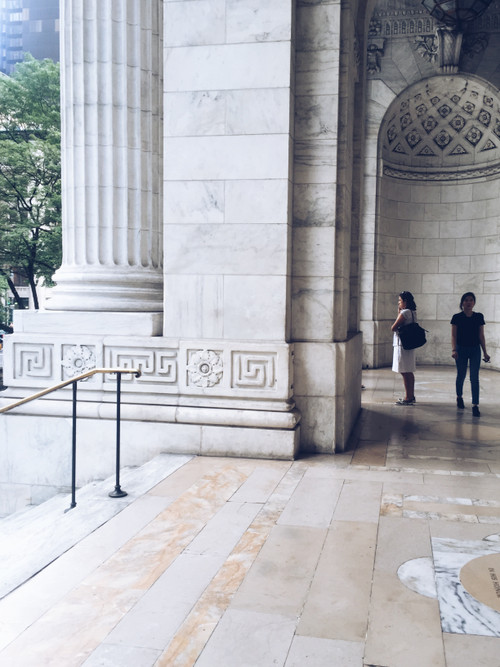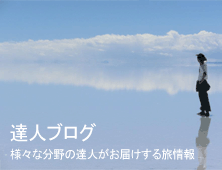 2016.07.01
2016.07.01
Located at 42nd Street and 5th Avenue is the New York Public Library's Main Branch, also known as the Stephen A. Schwarzman Building. Though this statuesque building is home to over six million books, tourists might find it more appealing for its architecture. In 1965 the NYPL was designated a National Historic Landmark and has been called a master piece in Beaux Arts design.
このビルの建築がとてもすばらしいです。
The giant marble staircase usually seats people who are eating on their lunch breaks, reading, or sketching the intricate carvings etched into the building's exterior. The building - including the tables, chairs, lamps, and chandeliers - are all original designs by John Merven Carrère and Thomas Hastings.
たいてい階段の所にたくさんの人が昼ご飯を食べたり、本を読んだり、ビルの絵を書いたりしているのを見えます。
The library offers free hour-long tours as well as a variety of free exhibits, which are definitely something to take advantage of. This space is more of a museum-library hybrid rather than just a place to read, and even just being in one of the library's reading rooms feels incredibly immersive.
この図書館はたくさんただなツアを出しますから是非乗じてください!
There are two marble lion statues at the front of the building who were also formerly named after the library's founders - Leo Astor (After John Jacob Astor) and Leo Lenox (After James Lenox). In the 1930s Mayor Fiorello Laguardia renamed the lions Patience and Fortitude; he felt these were two virtues New Yorkers would need to survive the economic depression. Patience and Fortitude are now commonly referred to as "New York's most lovable public scupltures."
このライオンの名前はペーシエンスとフォーチツードです。
The opulent bronze front doors of the library lead to Astor Hall, named after one of the aforementioned founders - John Jacob Astor.
この豪華なドアはアスターホールと言う場所に入ります。
The grand staircases on both sides of the main floor lead up to a beautiful corridor overlooking Astor Hall below.
The breathtaking, 17-foot tall McGraw Rotunda on the third floor of the library immediately stands out from the other floors as it is the only one constructed of Corinthian walnut instead of marble. The beautiful murals all over this room were done by Edward Laning in 1942, and depict the history of the written word.
三階に行くとすばらしい胡桃で作ってある所があります。この部屋にたくさん壁画がかざっています。
The meticulously carved archways marking off each landing and corner become haunting after a while, especially on the way down to the basement. In 1920, the basement was home to a co-op General Store ran by employees of the NYPL.
1920にビルの地下に雑貨屋が開いていました。
Something I learned from the New York Public Library's archive is that the tradition of water pouring out of lions' mouths in fountains originated in Egypt. Each year, when the sun is in constellation leo, the Nile River rises. To celebrate and symbolise this event, Egyptians began carving statues of lions. Water and lion thus became associated, and Egyptians began adorning their fountains with the heads of lions. This practice spread to other countries and is now a widely recognized aeshetic.
ライオンの頭が噴水の所にあるのはエジプトから来た伝統です。
Unfortunately, none of the drinking fountains in the NYPL are actually functioning, which is semi-reminiscent of the Croton Reservoir on which the NYPL Main Branch is built. The reservoir was a main source of water for the city in the 19th century until its amounts were no longer sufficient for the ever expanding population of NYC.
ここの噴水は水がでないから自分の水を持ってきてください!
Admission to each of the three reading and study rooms this building has to offer is restricted to qualified researchers and writers whose access has been pre-approved. However, you can enter and learn all about the history of each room on one of the free hour-long headset tours the library offers.
勉強部屋は研究者や作家のために席が取ってあるが誰でも入って見てもいいです!
Though I wasn't able to visit the collection today due to a cleaning, the stuffed animals that inspired the stories of Winnie the Pooh live in the NYPL Main branch as well. They were gifted to the library by Christopher Robin in 1987 and are available for all to view.
ウイニーザプーの話を動かしたぬいぐるみもここに住んでいますから是非見に来てください~!
-Hana (華夏)



 テーマ:
テーマ:






